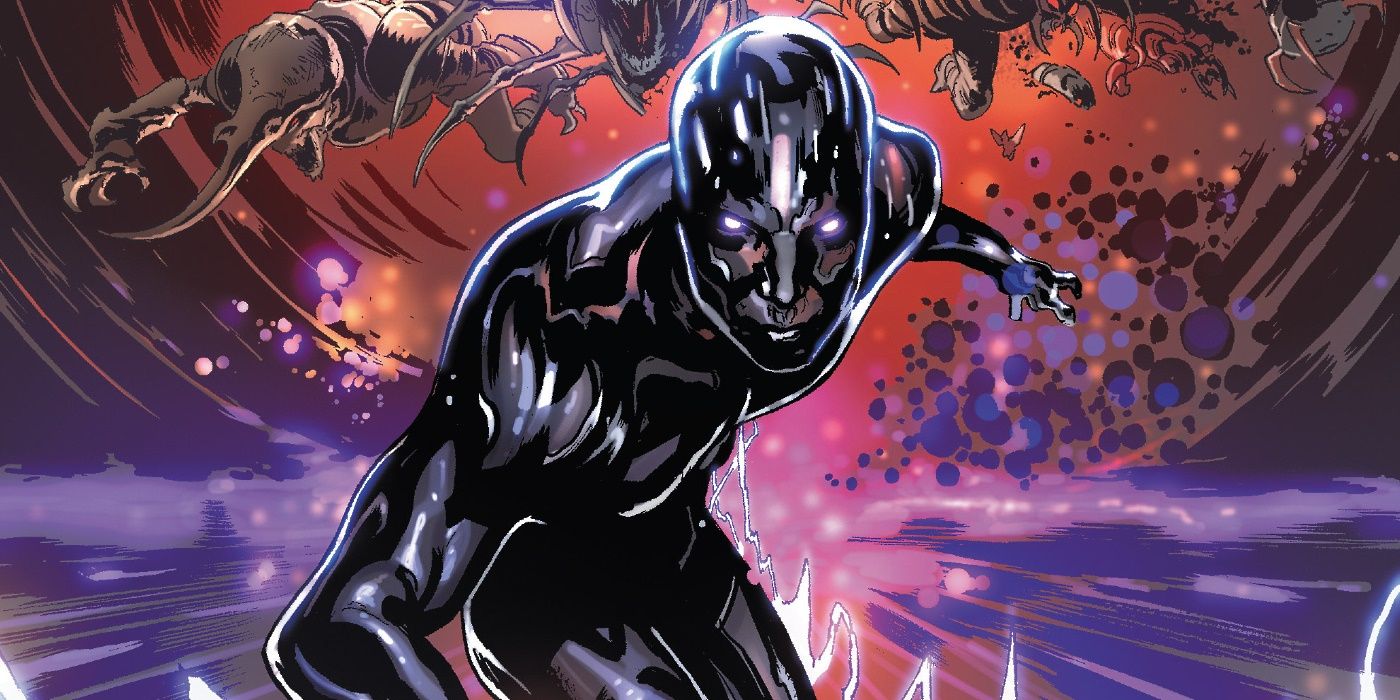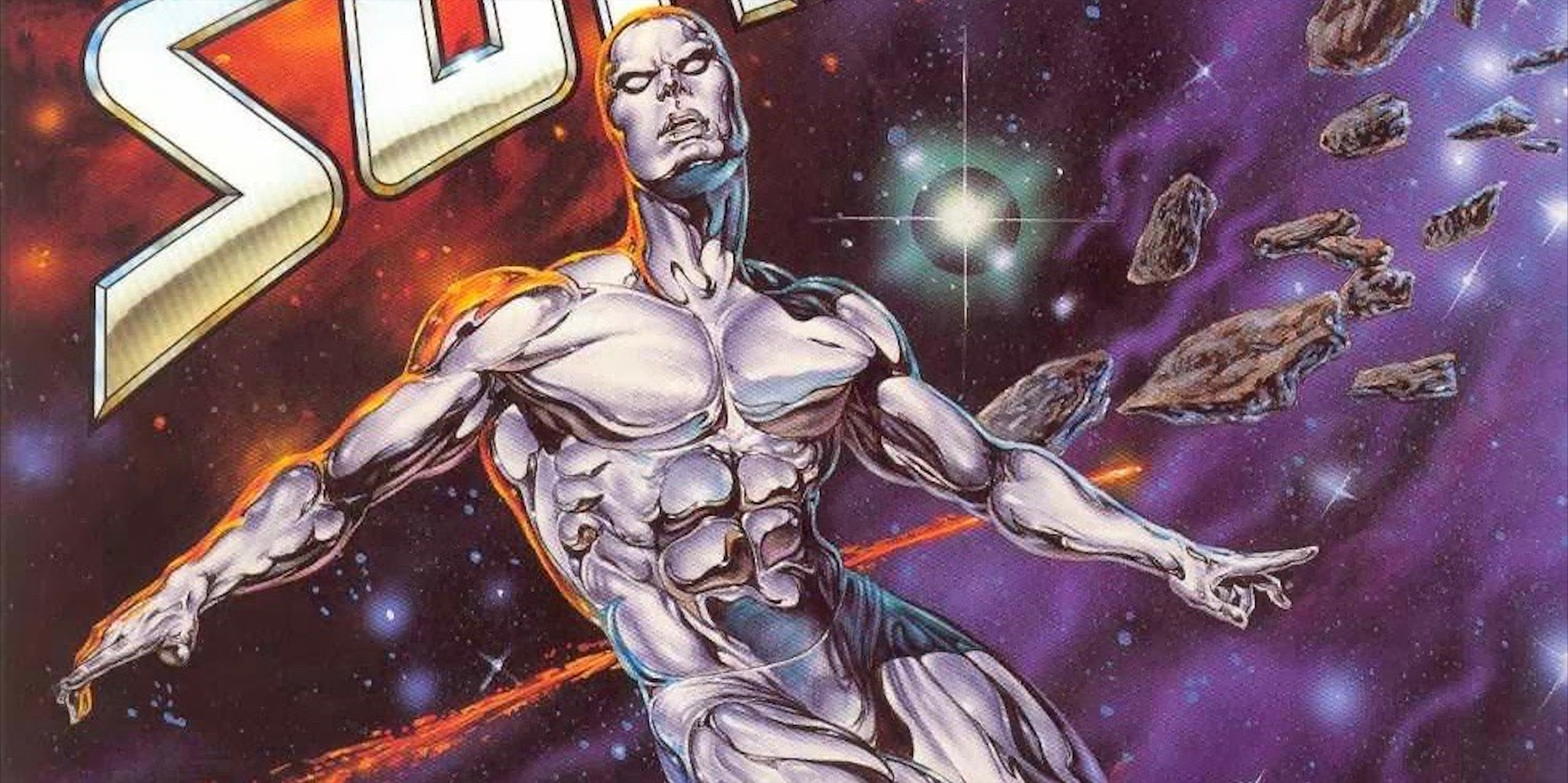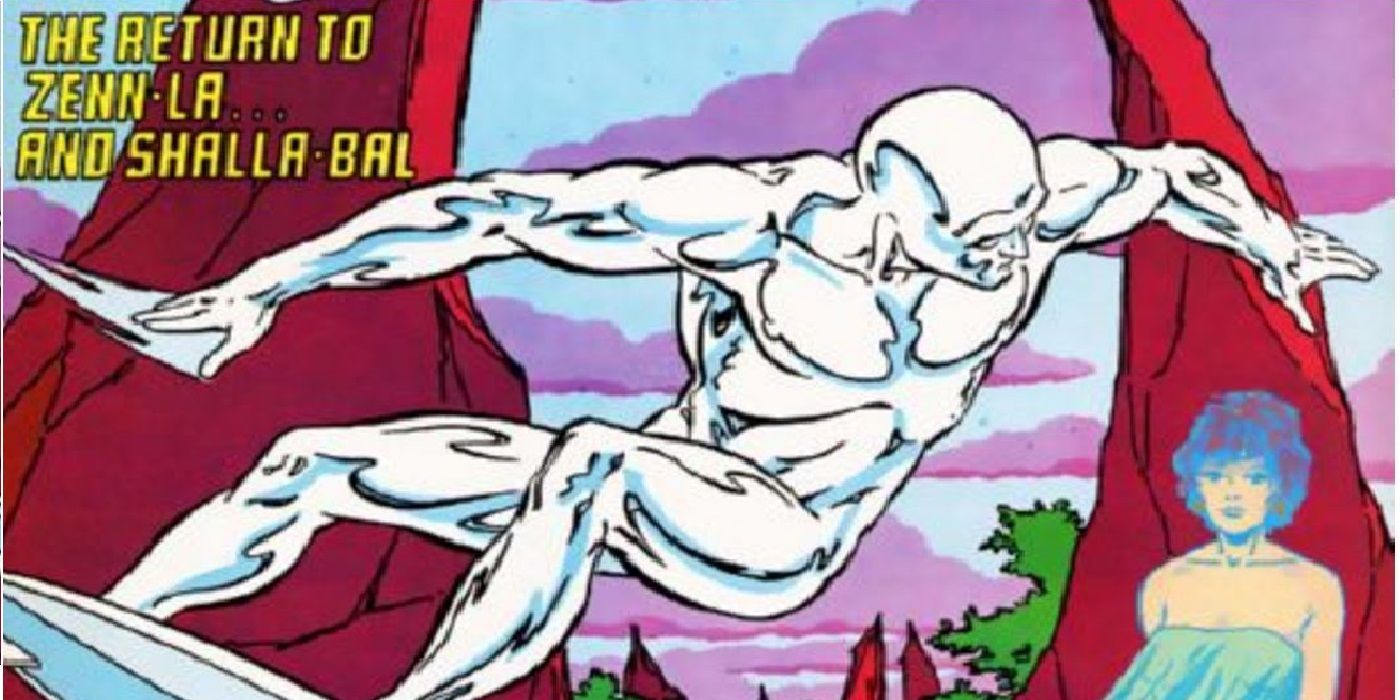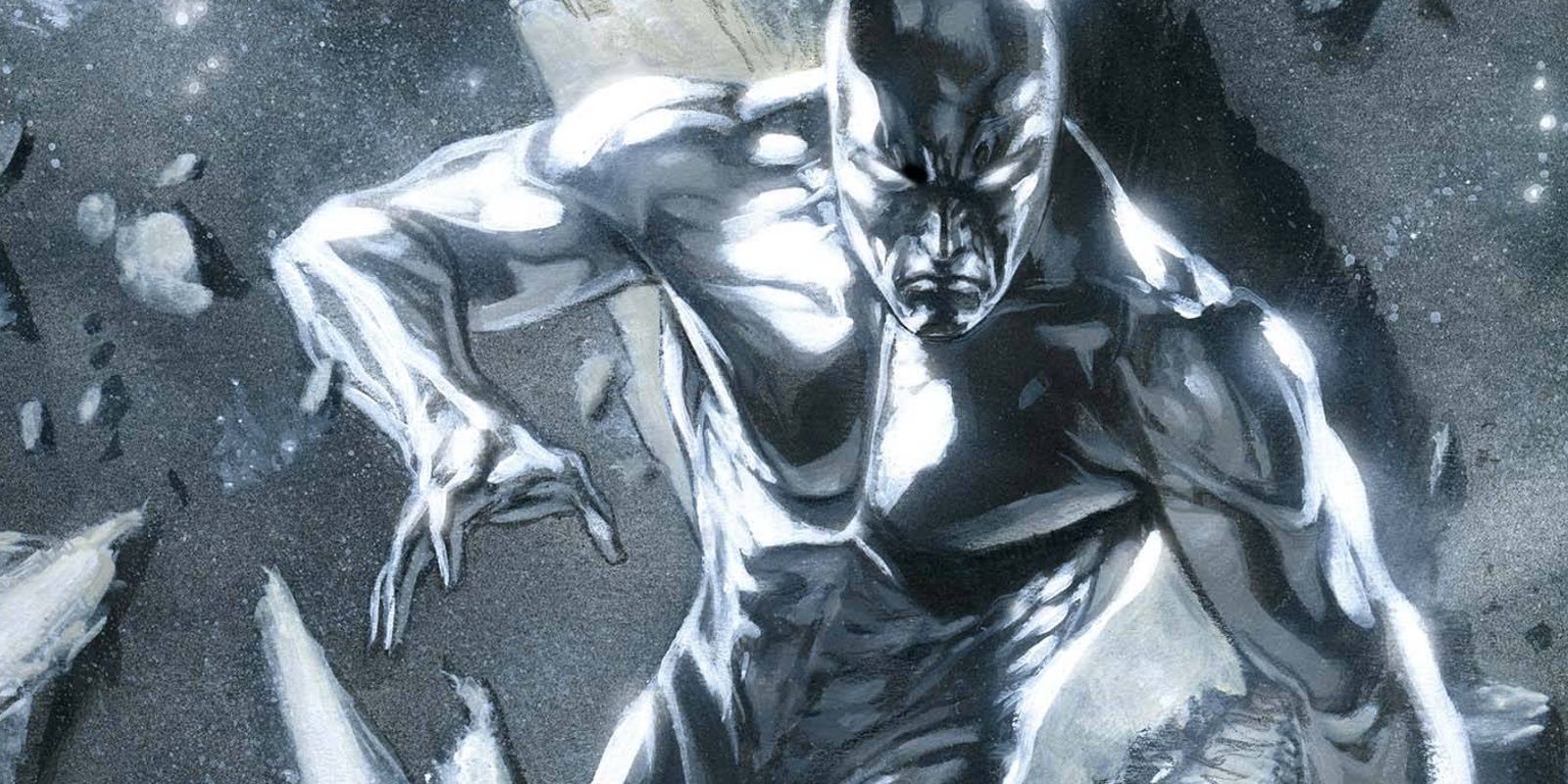When the Silver Surfer made his first appearance over fifty years ago, readers knew he was something special. But due to the connection between Silver Surfer and the Fantastic Four in both movies and his original comic appearance, many fans now see him as a foil, an antagonist, and not the cosmic champion he's shown himself to be in decades of Marvel Comics..
When he made his return as the final Thor in Marvel's Universe as part of Donny Cates's Thanos series in 2018, the writer set the bar even higher. In a gleefully grandiose introduction, Cates referred to the Surfer's origin as among the best. Even more so, saying, "The tale of the man once known as Norrin Radd is perhaps the greatest story ever told." and while not every fan would go that far, not many of them would deny it either. But for those who don't yet know what makes the Silver Surfer so much more than a supporting player to the Fantastic Four, let's take a closer look.
The Coming of the Silver Surfer
The Surfer's first appearance is hard to forget, with Jack Kirby revealing a gleaming, graceful figure gliding through space on a surfboard. "Somewhere in the deep vastnesss of outer space, an incredible figure hurtles through the cosmos--!" says the narration from writer Stan Lee. "A being whom we shall call the Silver Surfer, for want of a better name!" If Lee sounds tentative, there's a good reason. Thanks to his famous Marvel method of writing, he had no idea who this character was until he wrote those words.
Since the undeniably influential Stan Lee was writing nearly every Marvel book himself at the time, so he developed a new technique in order to handle the hundreds of pages he'd have to turn out every month. While many comics writers gave their artists full movie-style scripts, Stan Lee gave artists free rein to work his plot out on the page, before circling back to add the text. But with the Surfer, Kirby took more rein than usual. When Lee called him up to ask what was going on, Kirby explained that the villain, the enormous, planet-eating Galactus would need a herald to announce his arrival... and since he was sick of drawing spaceships, he gave the herald a surfboard.
Over the next few months, Lee and Kirby began developed his story: separated from his master while fighting the Fantastic Four, he falls out of the sky and into the apartment of Alicia Masters, a blind sculptor and the girlfriend of Ben Grimm, aka the Thing. Their time together convinces the Surfer that humanity is worth saving, and he turns on Galactus. With the Fantastic Four's help, he defeats him; but as a parting shot, the planet-eater curses the Surfer to be trapped on Earth--forever.
Silver Surfer Changes Without Jack Kirby
The Silver Surfer made appearances in various Fantastic Four stories over the next few years;, but in 1968, he got his own book written by Stan Lee, but without Jack Kirby. Instead, Lee collaborated with "Big" John Buscema to create an origin story for the Silver Surfer that went against Kirby's conception of their creation. Kirby envisioned the Silver Surfer being 'created from thin air' by Galactus. In Lee's story, he was originally an ordinary man, albeit from a faraway world. Born 'Norrin Radd' on the planet Zenn-La, the young student was frustrated by his decadent society's refusal to explore or innovate. When Galactus came to consume his world, Norrin traded his freedom for the planet's life, and vowed to serve Galactus by finding other planets to consume.
This new backstory didn't quite fit with his earlier appearances. Why did he need to learn the value of human life when he'd already been similar to one? Kirby wasn't happy with the changes, and they contributed to the rift between him and Lee that eventually caused him to leave Marvel for DC, launching his epic New Gods comic universe. But the Silver Surfer series was still a spectacular showcase for Buscema's art and Lee's writing, where he imagined the Surfer as a Christ figure, trying to bring love and peace to a world wanting neither, and sacrificing himself for them anyway. It's fitting, then, that Lee and Buscema's version of the 'temptation in the wilderness' would introduce the most durable Satanic figure in Marvel's universe: Mephisto.
Contentious as it was, the new origin deepened the Silver Surfer's character, giving him a lost love, Shalla Bal, who would motivate him throughout the series. Jack Kirby returned for the final issue, when after a brutal battle with the Inhumans, the book closes with an extreme close-up on the Surfer's apoplectic face promising, "From this time forth, the Silver Surfer will battle them on their own savage terms! Let mankind beware! From this time forth, the Surfer will be the deadliest one of all!" The banner at the bottom of the page promised "The savagely sensational NEW Silver Surfer!" would arrive... in an issue that never came. It's hard not to read his rage as Kirby's own, as one final note to Stan Lee as he went out the door.
The Surfer's Story Continues
Despite the circumstances of his creation, Stan Lee felt a special protectiveness towards the Silver Surfer. So for years, he wouldn't allow any other writer to tackle him (though that didn't keep him from joining the Defenders, "Marvel's Greatest Non-Team" with Namor, the Hulk, and Dr. Strange). That series' writer Steve Englehart finally broke the restriction in 1987 for a new series with artist Marshall Rogers. He also broke the barrier that kept the Silver Surfer on Earth, sending him off to explore the universe. A few years later Jim Starlin would take over the series, and use it to create his Infinity Gauntlet series with Thanos, eventually inspiring both Avengers: Infinity War and Endgame.
The Silver Surfer also made the leap to the big screen in 2007's Fantastic Four: Rise of the Silver Surfer. Unfortunately despite some genius casting (veteran creature actor Doug Jones acting the part, with Laurence Fishburne voicing the Surfer), fans were disappointed. Understandably, given the movie's re-imagining of Galactus from a towering armored alien into a floating dust cloud. But even more recently, writers Dan Slott and Mike Allred launched a new Silver Surfer comic series exploring the strangest parts of Marvel's cosmos. And after telling the Silver Surfer's last story, writer Donny Cates joined Tradd Moore for the ongoing miniseries Silver Surfer: Black, upping the mind-bending even further.
The title of the new series refers to the Surfer's battle with the God of Symbiotes, Knull, a completely modern villain introduced by Cates in the pages of Venom. Proving even now, the Silver Surfer's story is being woven through the very fabric of the Marvel Universe. Now, will a future adventure take him onto movie screens with the rest of Marvel's cosmic champions? Stay tuned!




